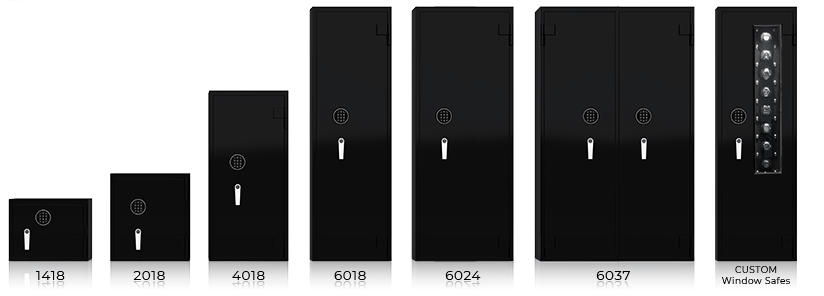The smart Trick of Second Hand Safes That Nobody is Talking About
Table of ContentsAn Unbiased View of Second Hand SafesGetting My Deposit Boxes To WorkThe smart Trick of Chubb Security Safes That Nobody is Discussing

The is a framework for assisting make decisions about making effective usage of data which is confidential or sensitive. It is generally used to explain or create research access to analytical information held by federal government companies, and by data archives such as the UK Data Service. 2 of the 5 Safes describe statistical disclosure control, therefore the 5 Safes is usually utilized to contrast analytical and non-statistical controls when comparing information management alternatives.
The combination of the controls leads to 'safe usage'. These are most frequently revealed as concerns, for example: Safe jobs Is this usage of the data suitable? Safe people Can the users be relied on to utilize it in a suitable way? Safe settings Does the gain access to center limitation unauthorised usage? Safe information Exists a disclosure risk in the information itself? Safe outputs Are the statistical outcomes non-disclosive? These measurements are scales, not limitations.
For instance, a public usage file readily available for open download can not manage who utilizes it, where or for what purpose, therefore all the control (security) need to remain in the data itself. On the other hand, a file which is only accessed through a safe environment with licensed users can include very delicate details: the non-statistical controls allow the information to be 'risky'.
There is no 'order' to the Five Safes, because one is necessarily more vital than the others. Nevertheless, Ritchie argued that the 'supervisory' controls (jobs, people, setting) must be addressed before the 'analytical' controls (information, output). perth safe company. The 5 Safes idea is connected with other subjects which developed from the exact same program at ONS, although these are not always executed.

7 Easy Facts About Deposit Boxes Described
This presentation follows the concept of 'information as a recurring', in addition to information protection laws of the time which often characterised data simply as anonymous or not anonymous. A comparable idea had actually currently been established separately in 2001 by Chuck Humphrey of the Canadian RDC network, the 'continuum of gain access to'.
The 5 Safes was developed in the winter season of 2002/2003 by Felix Ritchie at the UK Workplace for National Statistics (ONS) to describe its secure remote-access Virtual Microdata Lab (VML). It was described at this time as the 'VML Security Design'. This was embraced by the NORC data enclave, and more extensively in the US, as the 'portfolio model' (although this is now also used to refer to a somewhat different legal/statistical/educational breakdown). second hand safes.
The initial structure view publisher site only had 4 safes (tasks, gun safes under $300 individuals, settings and outputs): the structure was used to explain highly detailed information gain access to through a protected environment, and so the 'data' measurement was irrelevant. From 2007 onwards, 'safe data' was included as the framework was used to a describe a broader series of ONS activities.
Some conversations, such as the OECD, use the term 'safe and secure' rather 'safe'. However, making use of both these terms can cause presentational issues: less control in a specific dimension might be seen to indicate 'hazardous users' or 'insecure settings', for instance, which distracts from the main message. Hence, the Australian federal government utilizes the term "five information sharing principles".
There is no reference to the Five Safes or any involved literature. The Australian variation was needed to include references to the Five Safes, and provided it as an option without remark. The framework has had three uses: pedagogical, detailed, and style. The latter is a reasonably recent advancement. The first significant use of the structure, other than internal administrative usage, was to structure scientist training courses at the UK Office for National Stats from 2003.

The Chubb Security Safes Statements
Eurostat in 2011). An early usage was to help determine areas where ONS' still had 'irreducible threats' in its provision of safe remote gain access to. The framework is primarily utilized for private social science information. To date important link it appears to have actually made little influence on medical research preparation, although it is now consisted of in the modified standards on carrying out HIPAA policies in the United States, and by Cancer Research UK and the Health Foundation in the UK.
In basic the 5 Safes has been used to explain services post-factum, and to explain/justify choices made, but an increasing number of organisations have actually utilized the framework to develop information gain access to options. For example, the Hellenic Statistical Company established a data technique built around the 5 Safes in 2016; the UK Health Structure used the Five Safes to design its information management and training programmes.
The significant style usage remains in Australia: both the Australian Bureau of Data and the Australian Department of Social Service utilized the 5 Safes as an ex ante style tool. In 2017 the Australian Productivity Commission suggested adopting a version of the structure to support cross-government information sharing and re-use.